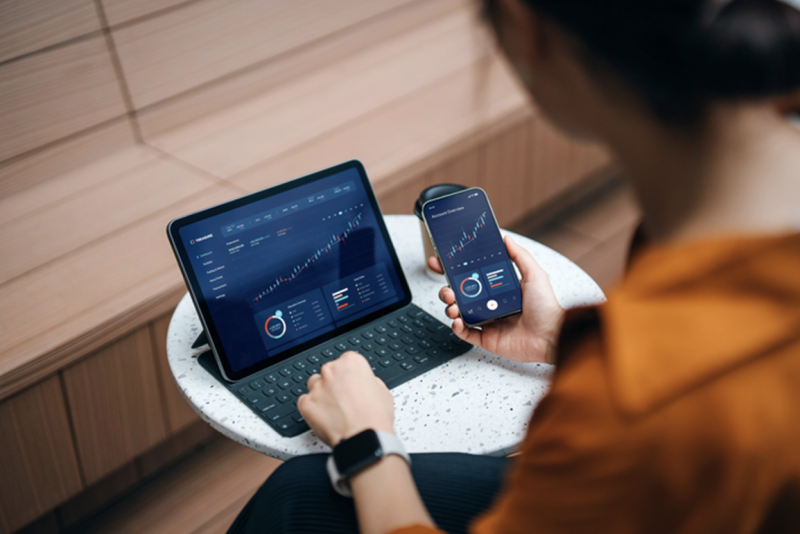Trading stocks has never been easier. In the 1970s, buying or selling shares usually required making an appointment with a stockbroker. Today, you can own a stake in any publicly listed company in the world within seconds on your smartphone or tablet.
Trading apps like CMC Markets or eToro spend a fortune advertising their services, and the impression consumers are given is that trading stocks is the way to make money, and make it fast. The reality, sadly, is rather different.
The key thing to understand about buying individual stocks is that the majority are duds. Research has shown that, in the long run, only around 40% of US stocks outperform Treasury Bills (in other words, US government bonds). Furthermore, over their full life, only 49% of US stocks produce a positive holding period return (the median lifetime return was -3.7%).
The odds are stacked against you
That’s an amazing statistic. To put it another way, you have only a one-in-25 chance of identifying, in advance, a stock that will give you a better return than one of the safest investments there is.
You might be thinking that, with a little research, you can at least increase your chances of finding a mega stock of the future. But is it genuinely realistic? There are hundreds of thousands of investment professionals across the globe who spend their lives trying to identify which stocks to buy. Yet, in the long term, only a tiny proportion of them succeed in beating the broader stock market on a properly cost- and risk-adjusted basis.
Not even the greatest living stock picker Warren Buffett has managed to outperform since the global financial crisis. Do you really think you stand a chance of beating Buffett, and all those other professionals, on the strength of a few hours’ research or reading an article in an investment magazine?
The recent movie BlackBerry provided an excellent illustration of just how hard it is to outperform by trading individual stocks. It tells the story of the eponymous hand-held computer, and the meteoric rise and equally spectacular demise of the Canadian firm behind it, Research In Motion.
Spotting a future winner is hard
As the movie shows, RIM was about the last company you would expect to play the pivotal role it did in the development of communications technology. Its success came suddenly and out of the blue. Of course, millions of investors bought into it once they had seen how revolutionary the BlackBerry device was. But the likelihood of an armchair trader spotting that potential ex ante was very slim.
Even if you had been fortunate enough to identify BlackBerry as a good investment before its shares took off, you would have needed nerves of steel to invest heavily in it in the early days. It’s very common for people who invest in new, disruptive companies to lose most or even all of their money.
Let’s say, though, that you bought BlackBerry stock when the business went public in 1997. It’s true that, if you had held onto your shares without cashing them in, you would have seen strong returns.
When do you sell?
The problem is, as a stock trader, you really need to sell when the price is high — and that is also very tricky.
With the benefit of hindsight, the best time to sell was in mid-2008, when the share price peaked at more than $140. But that was just the time when the shares were most in demand. It seems obvious now that BlackBerry was overpriced, but at the time, it was one of the most sought-after stocks in the world.
The truth is that the majority of stock traders neither buy nor sell at the “right” time. When BlackBerry shares started falling, many investors held on in the hope of a recovery that never came. The company struggled to adapt to the changing smartphone market and fell behind Apple iPhone and Google’s Android devices in terms of innovation. By 2011, BlackBerry’s share price had dropped to around $25 per share. Eventually the company exited the smartphone sector altogether, and it currently trades at less than $4 a share.
The key takeaway from what happened to BlackBerry is that buying individual stocks is usually a futile exercise. At any one time, there are tens of thousands of stocks to choose from. It’s very unlikely that you, as an amateur investor, have the skill or knowledge to pick out from all of those companies the next Amazon or Netflix.
Even if you do pick a winner, you have to be brave enough to stay invested while the price is rising, and then smart enough to dispose of your shares before, almost inevitably, the company goes into a downward spiral.
The rational alternative to trading stocks
The good news is that there is a rational alternative to trading individual stocks which is much easier on your nerves and, in the long term, is highly likely to give you a much better return.
By investing in a low-cost index fund or a similarly diversified passive fund, you get to share in the success of the world’s best companies. Yes, there are bound to be stocks in there that underperform and eventually fall out of the index altogether. But, by the same token, you are guaranteed to own the small number of stocks that will drive the bulk of market returns in the years to come.
Of course, if you have a hunch that a particular brand you like has a bright future, feel free to buy shares in it. But be aware that what you’re doing is more akin to betting than it is to investing.
You should think of it like buying a lottery ticket. You might be lucky, but the prospect of a life-changing outcome is very remote.

